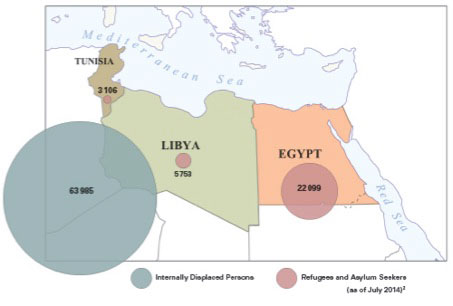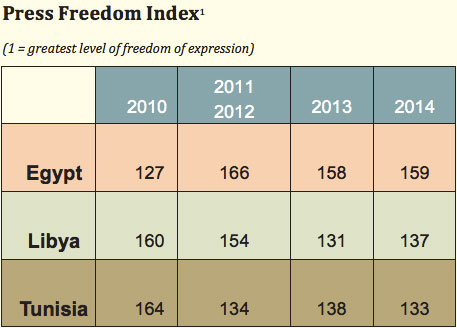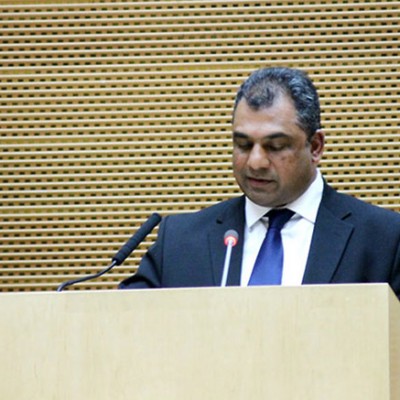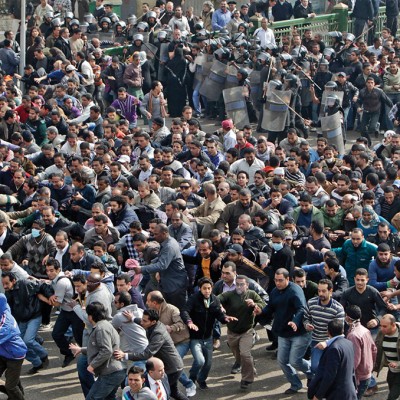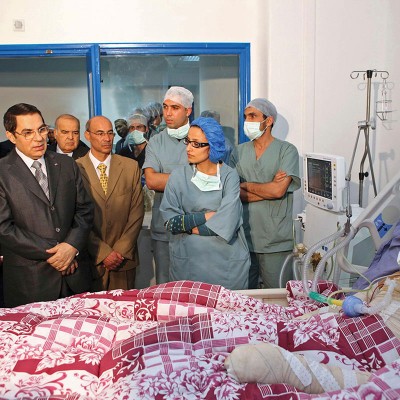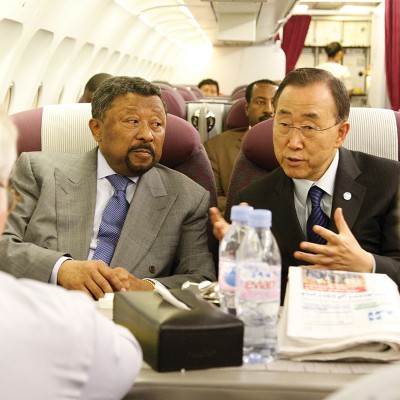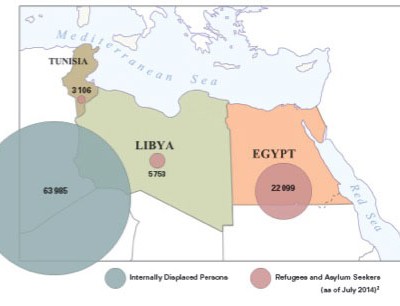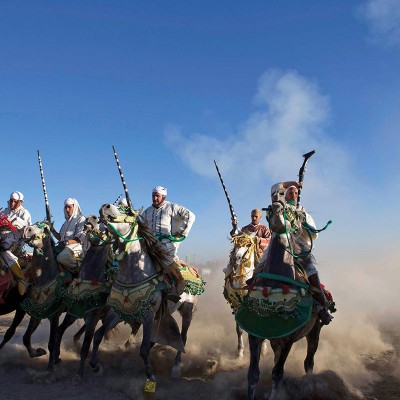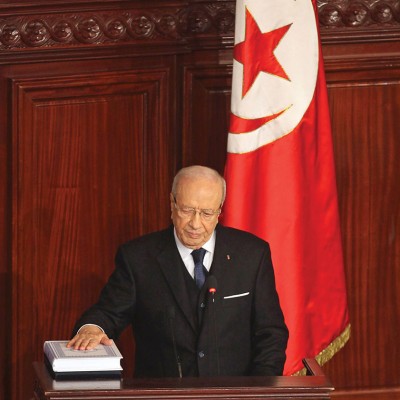Four years after the first of the Arab Spring revolutions erupted in Tunisia, the African Centre for the Constructive Resolution of Disputes (ACCORD) is observing the trends and taking stock of the impact of the revolutions in the three most affected African countries: Tunisia, Egypt and Libya. This fact file examines two sets of indicators – governance and economic factors – to highlight the progress made and difficulties encountered in the three countries since the uprisings. Although some of the data is not yet available for 2014, the numbers are evocative. All three countries have known democratic gains, but Tunisia is the only country to sustain the momentum. All three states have become increasingly fragile since the revolutions and, as a consequence, high numbers of internally displaced persons, refugees and asylum-seekers are reported, particularly in Libya and Egypt. The economies of the three countries have been severely affected, but some progress can be seen. The tourism industry is on the mend in Tunisia, as is foreign direct investment in Egypt. However, the three countries have not yet begun to fare better than they did prior to the revolutions, and much remains to be done to guarantee their security and prosperity.
Sources
- Reporters Without Borders (2015) ‘Press Freedom Index’, Available at: <http://en.rsf.org/press-freedom-barometer-journalists-killed.html?annee=2014> [Accessed 7 February 2015].
- United Nations High Commissioner for Refugees (UNHCR) (2015) ‘2015 UNHCR Subregional Operations Profile – North Africa’, [Country Pages under Statistical Snapshot], Available at: <http://www.unhcr.org/pages/49e45ac86.html> [Accessed 7 February 2015].
- Economist Intelligence Unit (2011–2013) Democracy Index. London: The Economist [Tunisia: p. 13 (2011), p. 6 (2012), p. 5 (2013); Egypt: p. 14 (2011), p. 6 (2012), p. 7 (2013); Libya: p. 14 (2011), p. 6 (2012), p. 6 (2013)].
- The Fund for Peace, Foreign Policy (2010-2014) ‘The Fragile States Index’, Available at: <http://fundforpeace.org/fsi/data/> [Accessed 7 February 2015].
- The World Bank (2015) ‘GDP Growth’, Available at: <http://data.worldbank.org/indicator/NY.GDP.MKTP.KD.ZG> [Accessed 7 February 2015].
- Tunisian Ministry of Tourism (2015) ‘Réalisations du Secteur Touristique’, Available at: <http://www.tourisme.gov.tn/realisations-et-perspectives/tourisme-en-chiffres/statistiques-2014.html> [Accessed 7 February 2015].
Al Arabiya News (2014) ‘Egypt Tourist Numbers to Rise 5–10 pct in 2014’, Available at: <http://english.alarabiya.net/en/business/economy/2014/09/11/Egypt-tourist-numbers-to-rise-5-10-pct-in-2014-.html> [Accessed 7 February 2015]. - The World Bank (2015) ‘Foreign Direct Investment’, Available at: <http://data.worldbank.org/indicator/BX.KLT.DINV.CD.WD> [Accessed 7 February 2015].
- The World Bank (2015) ‘Unemployment’, Available at: <http://data.worldbank.org/indicator/SL.UEM.TOTL.ZS/countries> [Accessed 7 February 2015].

